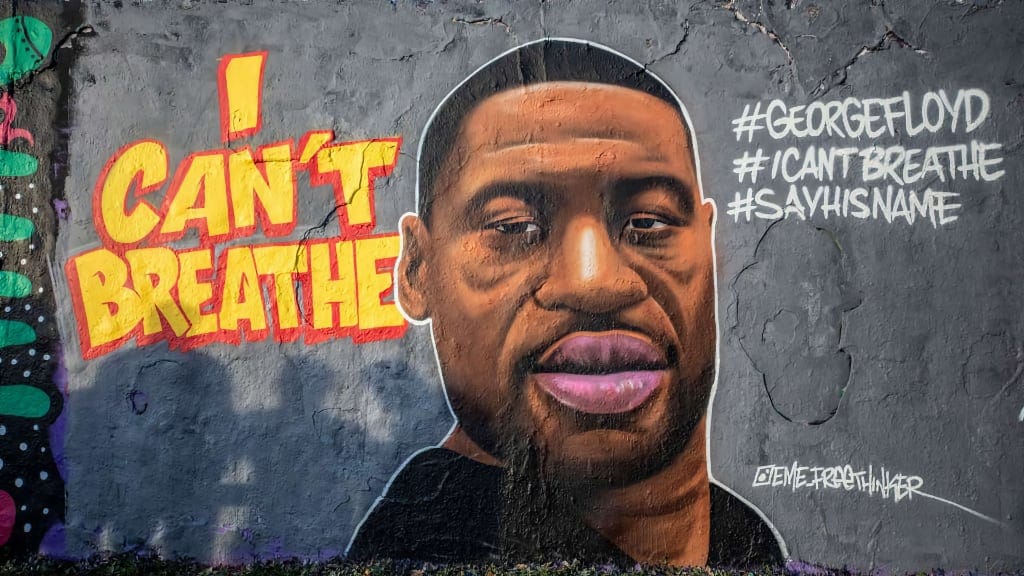Police terror and mass incarceration do not exist in a vacuum. In our country, harm and punishment have invaded every aspect of society and have done so with surgical racial precision. We see it in the ways we address drug dependency and mental health crises by disproportionately putting Black and Brown people behind bars instead of providing holistic treatment. We see it in inhumane panhandling laws and cash bail that punishes people for being poor. We see it when we suspend BIPOC children from school and give them detention at disproportionate rates. At each step, our government has legitimized punishing Black and Brown people. It is not surprising, then, that the police commit harm and violence against Black and Brown bodies with impunity — and at alarming rates.

We need to reimagine our concept of justice and safety radically. For too long, we have addressed harm with reciprocal harm. Our elected and appointed officials catered to our worst retributive instincts, resulting in mandatory minimums, sentencing enhancements, and over-policing. What did it get us? An unaddressed drug dependency and mental health crisis, jails overflowing with Black and Brown people, and too many lost loved ones to count.
What we need now is a focus on health and healing. While some pundits and naysayers saw calls to defund the police and invest in BIPOC communities as pipe dreams, our movement did what it always does. We listened, we got to work, and we created the Sanctuary Zone. Our movement has champions: Reps. Ayanna Pressley and Rashida Tlaib support our goals. We want the next presidential administration to prioritize the passing of this powerful modern-day civil rights legislation. We built the roadmap to take us away from harm and towards health and healing — now.
The Sanctuary Zone is a message of love to BIPOC people. That is what we have been missing for too long. Practically speaking, the Sanctuary Zone is a landmark civil rights movement. We are taking bold, progressive steps to build public safety systems that work for each of us, no matter what community from which we come.
When we say we need to rethink harm and punishment, that cannot just be a personal reflection. Our policymaking needs to follow suit. That is why the Sanctuary Zone exists.
It starts by divesting federal resources from vehicles of harm and punishment such as policing and incarceration. That means slashing enormous police budgets. That means decriminalizing drug use and repealing other federal laws that have for too long been used to disproportionately criminalize BIPOC women, children, and families. The Sanctuary Zone will put us on the road to police and prison abolition, letting our loved ones out of federal prison and immigration detention facilities, and building nurturing reentry systems to welcome them home and put them on the path to success and citizenship.
But that is just the start. It is a healing process. The Sanctuary Zone is building healthy and thriving communities. We know that communities know best how to keep themselves safe. That is why the Sanctuary Zone will provide organizations rooted in their communities with the funds to create public safety systems uniquely tailored to their community’s needs and incentivize states to decarcerate and defund.
From there, the sky is the limit for what our communities can be. The Sanctuary Zone invests in education justice, housing justice, and environmental justice and fighting systemic, institutional racism because we know safety is not more police in the streets. Safety is a place to call home, the water you can drink, the air you breathe, and schools that help our kids be their best.
Finally, the Sanctuary Zone seeks to address past wrongs. We want to radically reimagine public safety and take our communities in a new direction, but we cannot gloss over 400 years of harm. The Sanctuary Zone will study and establish reparations programs, fulfill the federal government’s commitments to indigenous people, and build more accountability in our democracy by expanding the franchise and rooting out the ghosts of Jim Crow.
The future of the Sanctuary Zone is up to us. A world where transformative and restorative practices replace punishment is within reach. Few took our calls in the streets seriously, so we have taken over the streets themselves. It is up to us now to fight to keep our new reality. This past election, our movement swept into the halls of power. Elected officials such as Jamaal Bowman and Cori Bush represent the power our community is building in the political sphere. It is up to us to keep pushing. We voted at historic rates. Now we must keep the pressure on and stay engaged.
The Sanctuary Zone is our new reality, but only if we fight for it.